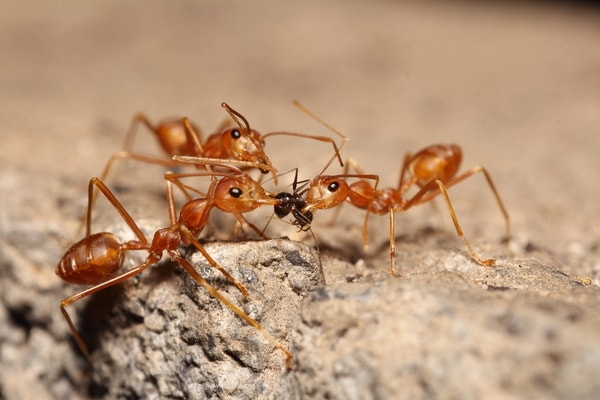Fire ants (scientific name: Solenopsis invicta) are very active and aggressive insects that tend to sting any intruding animal. They are reddish insects that are about 1.6 to 5mm in length. Their painful sting and unsightly mounds can be both an inconvenience and hazard for people. Fire ant stings tend to be painful for most people, leaving a stinging or burning sensation. They can even be fatal to people who have an adverse reaction to the venom in the bite.
Do you think you might have fire ants at home? Understanding fire ants, from their identification, food sources and management, can help you deal with them effectively.

Where Can You Find Fire Ants?
Fire ants are reddish insects that are about 1.6 to 5mm in length. One way to know if an insect is a fire ant is by its bite, which has a characteristic painful sting. This is, however, not recommended as a way to identify these insects.
Another way is by looking for their place of dwelling. These insects need both moisture and food source to survive, and they typically nest in the ground. The appearance of their social nests, called “mounds”, can be more reliably used to confirm the presence of this pest, though a mound is not necessary for the survival of the ant colony.
Fire ants build their mounds in almost any type of soil. They do prefer open areas such as parks, lawns and fields, which receive plenty of sunlight and warmth. You can identify their mounds as growing up to 18 to 24 inches in height.
These fire ants enter the mount through tunnels which extend several feet or more beyond the mound itself.
What Do Fire Ants Eat?
Fire ants are omnivores. These insects eat almost everything from meats to sweets to vegetables. They can eat other insects, spiders, arthropod eggs, seeds, and even newborn birds, rodents and calves.
In the morning and the evening, workers in the ant colony scavenge for the food and bring it back to the colony.
Leaving food sources out in the open can encourage fire ant activity near or even inside your home.
How Can You Control Fire Ants?
Signs of fire ant infestation include the mound, activity of worker and swarmer ants in the area, and complaints of painful stings.
The best way to treat a fire ant infestation is to have a local pest control company inspect the area, and then determine the correct type of management.
In the meantime, preventing any such instances include taking caution and being observant where you step or place items such as food or drinks, as these insects are easily provoked.
Written by BugOut Pest Control & Lawn Care. BugOut Pest Control & Lawn Care offers the best service for pest control in Columbia, MO.








